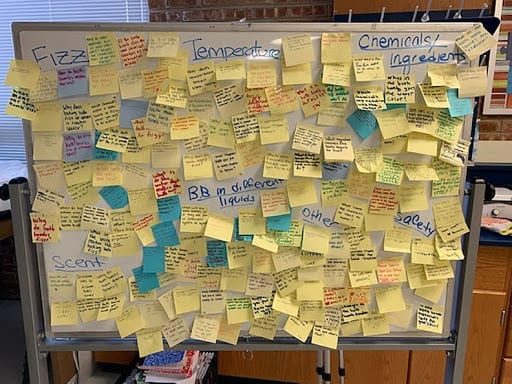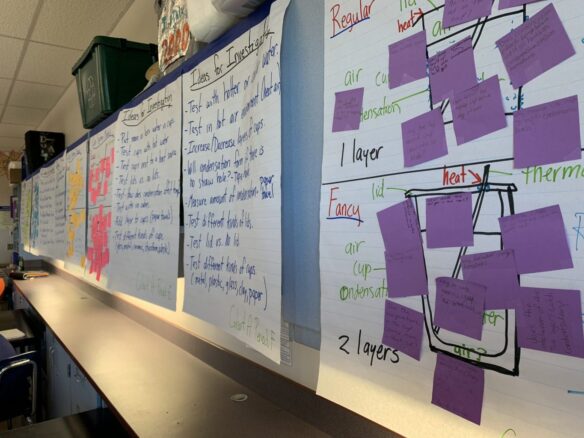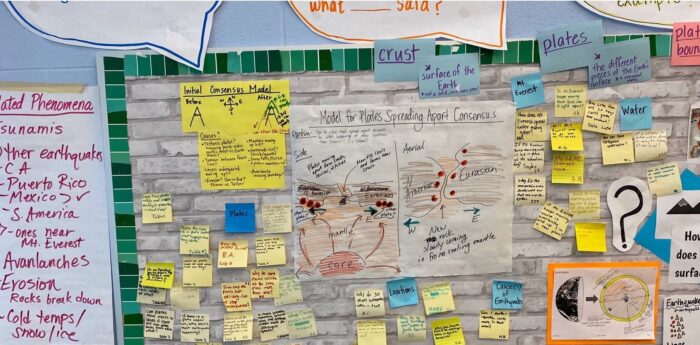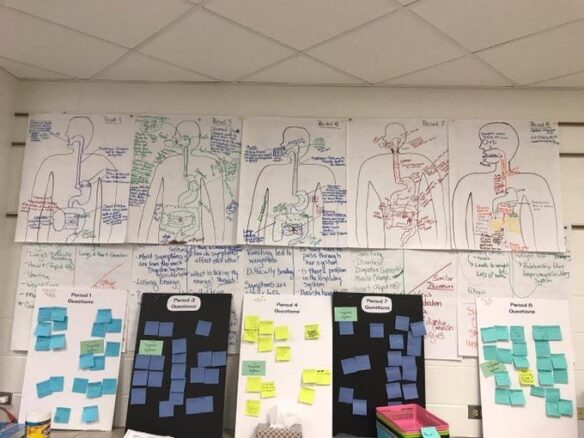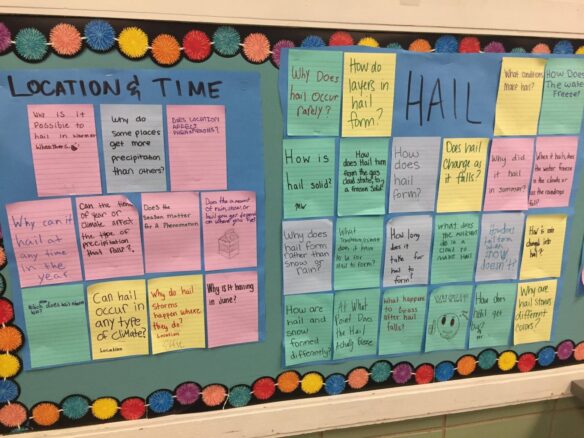What is the Driving Question Board?
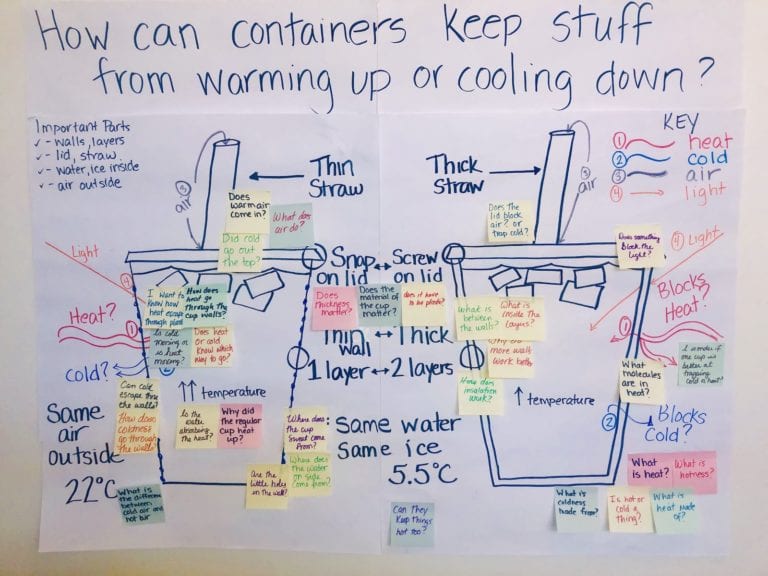
The Driving Question Board (DQB) is a tool used throughout the OpenSciEd units as a way to generate, keep track of, and revisit student questions that drive the investigation of the anchoring phenomenon and related phenomena. The DQB is a visual representation of the class’s shared mission of learning in the unit and is a central support for the OpenSciEd Instructional Model.
The DQB is publicly displayed to serve as a learning resource for the community and should be easily accessible to students to see and add to during the unit. DQBs can be constructed with sticky notes or sentence strips; they can be written on whiteboards or with shared software applications (e.g., Padlet, Mural, Jamboard). Wherever and however they are constructed, it is essential that the board be available to all students throughout the unit so they can see that their questions are driving the learning.
How does the DQB support equitable science classrooms?
The use of a DQB supports equitable science classrooms in several ways:
- A DQB helps to shift the focus of learning from an individual experience to a collective one in which our collective experiences and ideas are useful for moving our thinking forward.
- In the generation of a DQB, every student contributes a question and all of those varied questions are useful in helping the class move forward. The DQB provides an opportunity for the teacher to build a culture of appreciating and valuing diverse ideas and thinking, broadening the previous beliefs about who is privileged as a ‘knower’ in the science classroom.
- The DQB is a visual representation of the class’s shared mission of learning in the unit, which increases the ownership and agency students have of their learning.
Driving Question Board Montage

How is the DQB used in OpenSciEd’s materials?
A DQB is used at the beginning of each unit to capture students’ wonderings about phenomena, which are categorized and lead to the investigations that help students to figure out the phenomena. The DQB is then revisited throughout the unit to document the progress students are making and to launch deeper investigations and problem solving. Students should understand that the DQB is not meant to set the agenda for the unit because there will be more questions on the DQB than can be answered during the unit, but it should make it clear that the things that they wonder about are what the class is investigating.
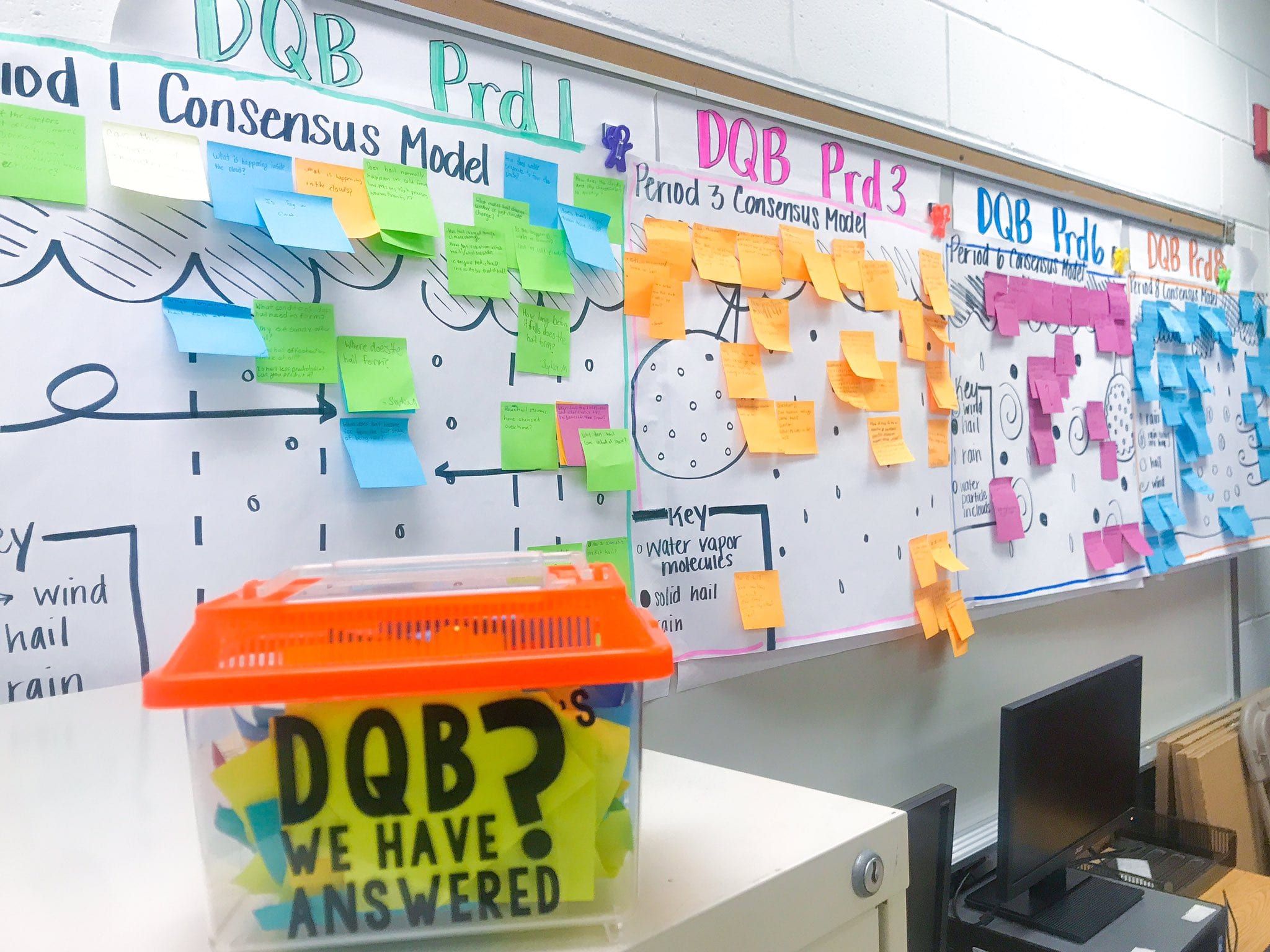
Ideas for preparing a DQB
- Use a large sheet of poster board or chart paper to make the DQB. At the top, write the unit question.
- Make a space in the classroom for the DQB that is easily accessible to students. Students will need to regularly go up to the DQB (over the course of the unit) to post their questions and look at the questions that their peers post. Ideally, it is in a space where students can gather chairs around it and walk up to it to reach any part of it.
- Create an Ideas for Investigations poster on chart paper to check off the ideas that the class pursues as it starts or finishes them.
- Add new ideas to the poster as students come up with them (additional pieces of chart paper may be needed.)
- There are lots of ways to organize separate DQBs for multiple class sections. One way is to put multiple charts on ring clips and flip the charts to display each class section’s DQB.
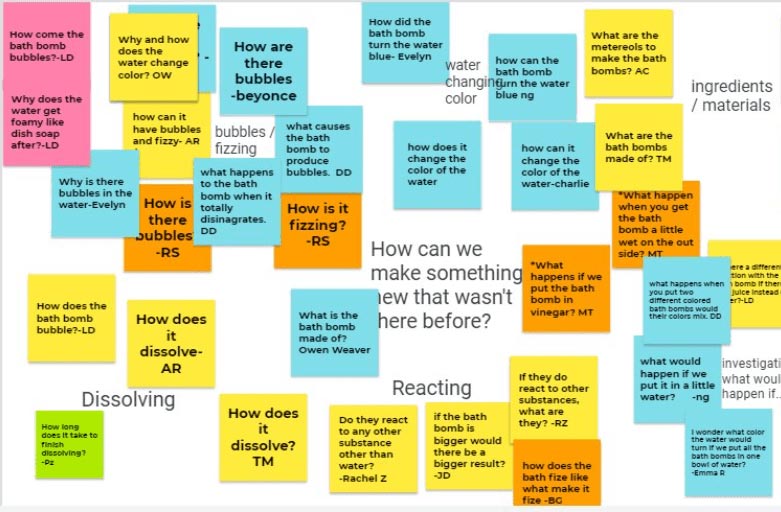
Sample Driving Question Boards
References
OpenSciEd’s use of a Driving Question Board draws from work on project-based science learning, e.g., Singer, Marx, Krajcik, & Chambers (2000), Weizman, Shwartz, & Fortus (2010), and Nordine & Torres (2013).
Portions of the above were adapted from tools and processes developed by NextGen Science Storylines at Northwestern University and from the work of the Investigating and Questioning our World through Science and Technology Project at the University of Michigan, Northwestern University, and Michigan State University.
Nordine, J., & Torres, R. (2013). Enhancing science kits with the driving question board. Science and Children, 50(8), 57-61.
Singer, J., Marx, R. W., Krajcik, J., & Chambers, J. C. (2000). Constructing extended inquiry projects: Curriculum materials for science education reform. Educational Psychologist, 35, 165-178.
Weizman, A., Shwartz, Y., & Fortus, D. (2010). Developing students’ sense of purpose with a driving question board. In R. E. Yager (Ed.), Exemplary science for resolving societal challenges (pp. 110-130). Arlington, VA: NSTA Press.



